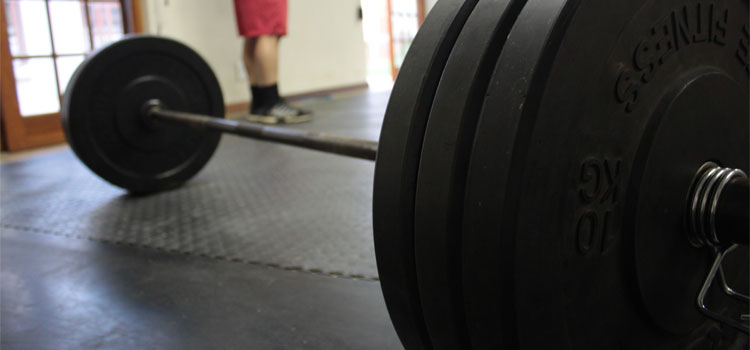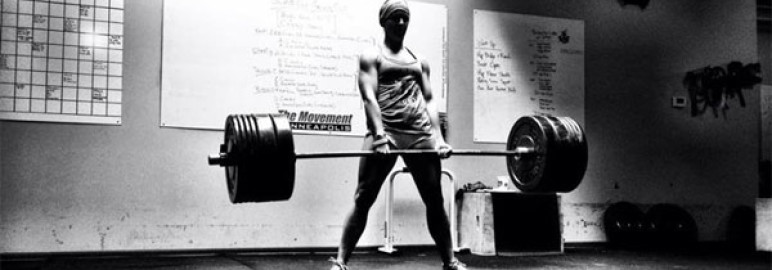What is the most effective way to gain muscle? Try this go to guide for understanding how to best design your training program.
Pick a Muscle and Determine the Optimal Volume
Pick your favorite muscle group. Yours might be pecs or quads. You would like to maximize your muscle growth, and you want to perform the optimal volume to tease out the most hypertrophy. Most individuals have a muscle group that is considerably lagging, one that causes them to feel particularly self-conscious about, and one that they would desperately like to improve. Since it is not easy to bring up a lagging bodypart for us natural, typical lifters, I argue that each of our routines should be heavily skewed toward our personal weaknesses, assuming that the goal is primarily based on aesthetics.
How many sets should you perform per week for your favorite muscle group? 10 sets per week? 20? 50? 100? 1,000? Ten sets per week probably won’t be enough, obviously 1,000 sets would be overkill and counterproductive. For most people the ideal number of sets per week should be somewhere between 15 and 30 depending on the muscle group, exercises chosen, and the inherent recovery ability of the individual. For purposes of simplicity, let’s just set optimal volume at 24 sets per week.

Allocating Volume Throughout the Week
So we’ve got 24 sets per week to hammer a particular muscle group. Now we need to determine how to best distribute that volume. Would you perform all 24 sets on one day? Or would you do 12 sets on one day and 12 sets on another day? Or would you do 8 sets on three separate days? Maybe you would choose 4 sets on 6 days during the week. Here are your basic options:
- 24 sets on one day
- 12 sets on two days
- 8 sets on three days
- 6 sets on four days
- 4 sets on six days
Based on my experience as a lifter and personal trainer, I would say that these two options would deliver the best results:
- 8 sets on three days
- 6 sets on four days
Let’s go with the 8 sets on three days option, just because it’s simpler and easier to program.
Exercise Selection
We’ve decided to perform 8 sets for a particular muscle group on three training days per week, and now we’re trying to determine the best exercises to perform.
It is very important to note that not all exercises are created equal in terms of how they tax the body.
- Some exercises tax the hell out of the Central Nervous System and cannot be performed as frequently (think of exercises that use ultra heavy loads and heavily load the spine such as deadlifts)
- Some exercises create significant soreness and cannot be performed as frequently (think of exercises that stretch the muscles to long muscle lengths such as the RDL or walking dumbbell lunge)
- Some exercises distribute joint stress very well and can be performed more frequently (think neutral grip inverted rows)
- Some exercises don’t create significant soreness and can be performed more frequently (think of exercises that don’t utilize heavy loads such as face pulls or exercises that work the muscles mostly at short muscle lengths such as band hip thrusts)
- Some exercises target unique portions of muscles (think front raises versus lateral raises and rear delt raises)
With this knowledge, it is apparent that one exercise alone isn’t going to maximize the hypertrophic response to training.
If glutes are the muscle group you chose, maybe you would want to go with this program for a few months: Monday – 4 sets of deadlifts, 2 sets of front squats, and 2 sets of single leg hip thrusts; Wednesday – 4 sets of hip thrusts, 2 sets of Bulgarian split squats, and 2 sets of cable kickbacks; Friday – 4 sets of back squats, 2 sets of back extensions, and 2 sets of single leg RDLs. Yes, you could throw in some lateral band work at the end of each session too – those are pretty much freebies.
If quads are the muscle group you chose, maybe you would want to go with this program for a few months: Monday – 4 sets of back squats, 2 sets of deficit Bulgarian split squats, and 2 sets of leg extensions; Wednesday – 4 sets of leg press, 2 sets of front squats, and 2 sets of leg extensions; Friday – 4 sets of high bar back squats with chains, 2 sets of high step ups, and 2 sets of leg extensions.
If pecs are the muscle group you chose, maybe you would want to go with this program for a few months: Monday – 4 sets of bench press, 2 sets of decline press, and 2 sets of low pulley cable crossovers; Wednesday – 4 sets of incline press, 2 sets of push ups, and 2 sets of pec deck; Friday – 4 sets of dumbbell bench, 2 sets of weighted dips, and 2 sets of dumbbell flies.
In each of these examples, you have a variety of compound and isolation exercises, you have exercises that work the muscles at long lengths and short lengths, and you have exercises that combine to thoroughly work the entire spectrum of muscle fibers.

Is this the absolute best way to build muscle?
Maybe. Maybe not. For example, I wonder if I had my clients buy a hip thruster and perform band hip thrusts 7 days per week, would they see better results than if I had them do squats, deadlifts, hip thrusts, lunges, back extensions, and lateral band walks 2 days per week? Band hip thrusts do activate the upper and lower gluteus maximus incredibly well. They produce a ton of tension and create some serious metabolic stress, but they don’t produce much muscle damage (which is good when training with high frequency, but might not be optimal when trying to maximize hypertrophy). Until more is known and more studies are conducted on this topic, the variety approach with a wide range of exercises yield the best results.
Wrapping it All Together
Now we’ve determined the best approach for one muscle, but can we just duplicate this approach for every muscle group? Considering that we have 11 primary muscle groups, including:
- traps
- delts
- pecs
- lats
- bi’s
- tri’s
- abs
- glutes
- quads
- hams
- calves
There is simply no way that you could pull this off. You’d need to perform 24 x 11 = 264 sets of exercise per week, which is overkill. This is why it’s important to specialize with your programming, rather than just give each muscle group equal attention. Unless, however, you are happy with your proportions and perceive yourself to be highly symmetrical. In this case, you might want to allocate 12 sets per week for delts, pecs, lats, glutes, quads, and hams, and 4 sets per week for traps, bi’s, tri’s, abs, and calves (there will be some overlapping of sets of course).

How would you round out the routines listed above in the previous section? With the glute example, you’ll already be hitting the quads and hams pretty hard, so you could possibly just add in some leg extensions and leg curls on those days if additional quad or ham mass was desired. And on Tuesday and Thursday (and possibly Saturday, but 6 days per week is too much for many lifters), you could train upper body. Same goes for the quad example – you could add in some additional glute and ham work on lower body days, and perform upper body on Tuesday, Thursday, and possibly Saturday. In the pec example, you could add in some upper body pulling and delt work to the upper body days, and do lower body on Tuesday, Thursday, and possibly Saturday.
Your training should therefore be skewed toward your individual weaknesses. Prioritize 1 or 2 muscle groups that you most want to improve, but still make sure you’re training the entire body. Many women care about their glute development around a thousand times more than they do their trap, biceps, or calf development. Their training should reflect this preference.
Same Volume, More Variety
Notice that in my examples above, there were exercises that were performed for 4 total sets and exercises that were performed for 2 total sets. The decreased volume per exercise allows for more exercise variety. If I was trying to maximize my back musculature, and I could perform 10 total sets, I would much rather go with 2 sets of 5 exercises, such as deadlifts, chin ups, bent over rows, wide grip pulldowns, and seated rows, rather than 10 sets of 1 exercise, such as deadlifts or chin ups. This is especially true for muscles that perform multiple joint actions and have distinct subdivisions.
Conclusion

A nearly infinite number of configurations can work for strengthening and growing muscles. However, many lifters’ routines do not optimally target their weaknesses. Many lifters simply copy the routines of their idols, or perform a well-rounded routine that they see in the magazines. This won’t maximize their progress, since every lifters’ training should be individualized and skewed toward bringing up their weaknesses.
Consider variety and training. It is okay to perform just 2 sets of an exercise; you don’t have to perform 4-5 sets for every single movement in your training. This allows for more variety, increased motor unit recruitment, and greater total hypertrophy.
Get Glutes and the original article at BretContreras.com



![Beat Belly Bloating [VIDEO]](http://FitPhreak.com/wp-content/uploads/2016/06/bloating-223x145.jpg)





![5 Perfect Muscle-Building Foods! [VIDEO]](http://FitPhreak.com/wp-content/uploads/2016/04/2016-04-19_1513-223x145.jpg)



